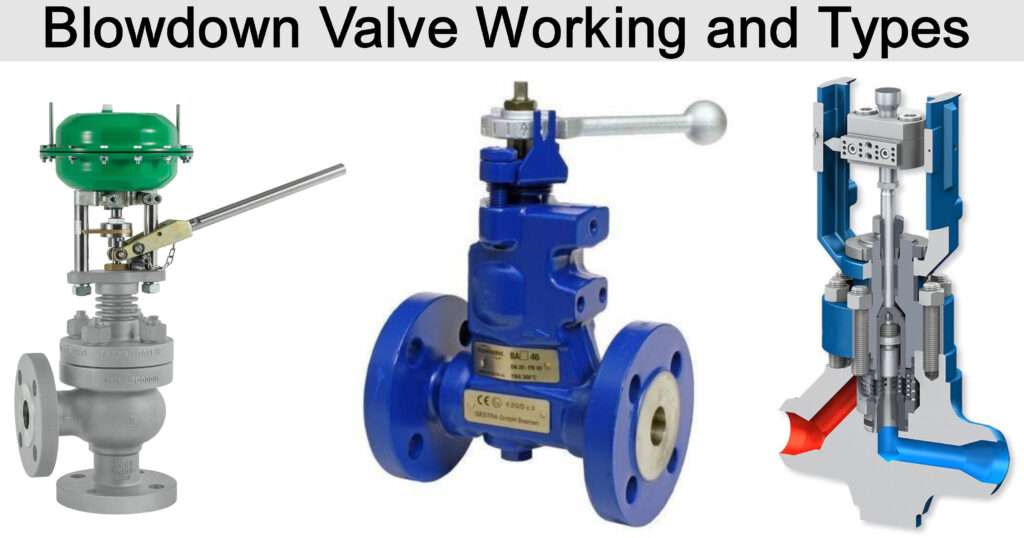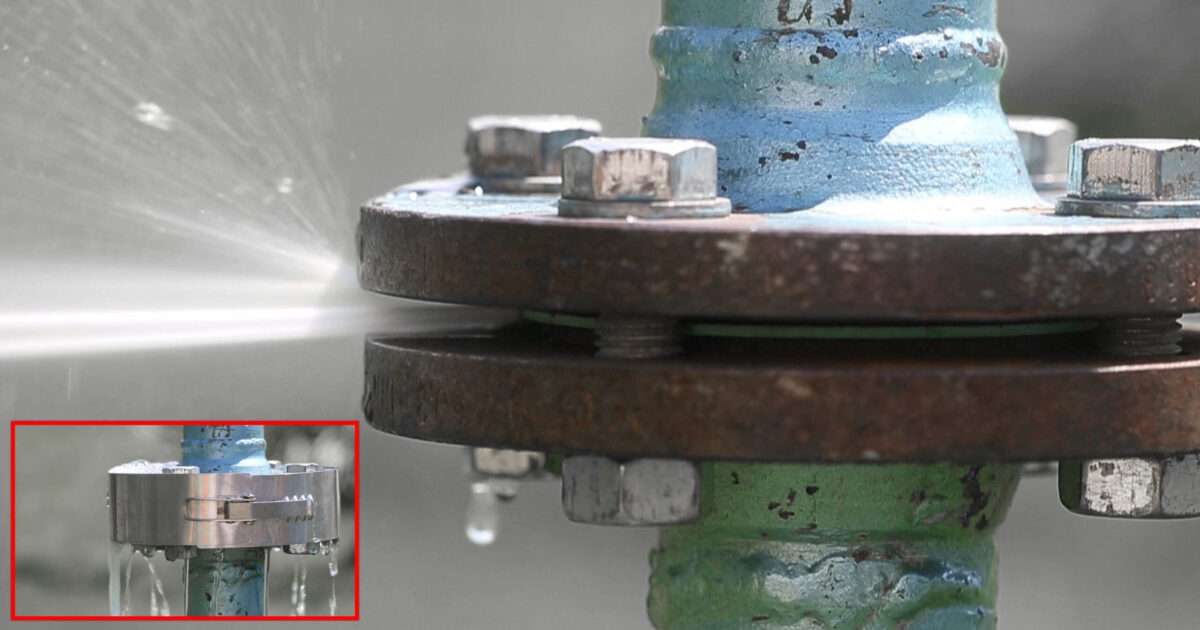Blowdown Valve Working and Types

Blowdown Valve Working and Types
Blowdown Valve Working and Types
Blowdown valves are used to drain some amount of liquid from an equipment. It is attached to those equipments whose working fluids contain solid impurities. The nature of such impurities are that they don’t dissolve in the working fluid and it may get deposited on the surfaces of the equipment this causing problems in the operation of the equipment.
Generally blowdown valves are attached to equipments in processes whose working liquid is water. If the water contains solid impurities and some amount of water is being evaporated continuously by some or the other mechanism for example drafting in cooling towers or vaporisation in boilers then the concentration of the solid impurities in rest of the water accumulated inside the equipment increases.
If it increases a lot then it starts depositing on the surface of the equipment. The deposition has the potential to cause blockages in the path of the flow of the liquid and those processes which require heat transfer operations are even more susceptible to face operational difficulties.
In boiler operations, the precipitation of the impurities is highest in the location where liquid water is converted into steam. The resulting scale formed acts as insulating layer which hinder the heat flow through the equipment. As the thickness of the scales formed increase the rate of steam generation decreases because the rate of heat flow decreases. It may also happen that the temperature of the metal surface may increase due to heat accumulation to such an extent that the metal surface itself may get damaged.
Types of Blowdown Valves
The precipitation of the solid impurities may be faster or slower depending on the process conditions and also the quality of water used. Based on this, the mechanism is classified as surface blowdown or bottom blowdown.
Surface Blowdown Valve:
It is used at those conditions in which the precipitation of the solid impurities is relatively slower. The simplest design is that a pipe is inserted near the surface of the water level and some water from the equipment is allowed to move out. Surface blowdown mechanism enables the equipment to be operated continuously at a steady state condition. While using this in boilers, the water moved out is sent to a flash tank where it is flashed and the flashed steam is used to heat up the feed water. A more efficient design is to use swivel joint and a short length of pipe is suspended on a float. This mechanism enables the collection of oil floating on the surface of the water. If the oil is not removed then it causes foaming inside the boiler.
Bottom Blowdown Valve:
Compounds are added to treat water so that sludge will be formed due to accumulation of the solid impurities. This sludge quickly settles at the bottom where a mud drum is provided in order to collect it. The valve is opened periodically for a short amount of time in order to remove the settled sludge. It is not operated in steady state and it is not recommended to open the valve for a long time because it will affect the water level inside the equipment. The water level may decrease too fast and the equipment may have to be shutdown so that it does not run dry. The diameter of the pipe is large enough such that the sludge does not get stuck and blocks the flow.
Advantages of Blowdown Valve
- They increase the productivity and decrease the shutdown of the equipment which may be caused periodically due to precipitate deposition.
- They can be automated or operated manually. They are easy to automate and also easy to operate manually.
- The maintenance is quite easy as the design is simple and the maintenance requirement is also minimal.
Reference:- automationforum
































